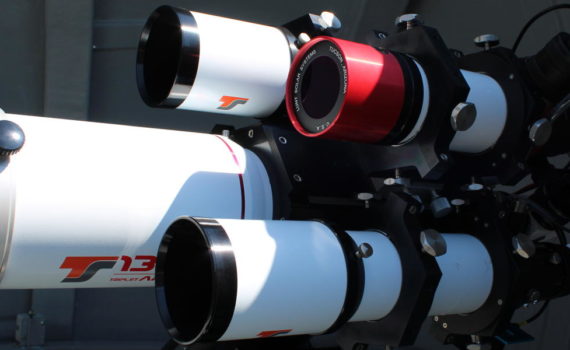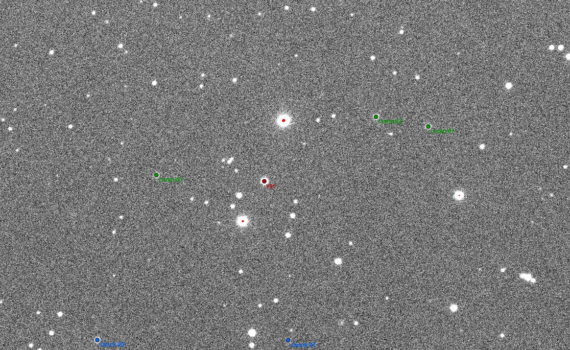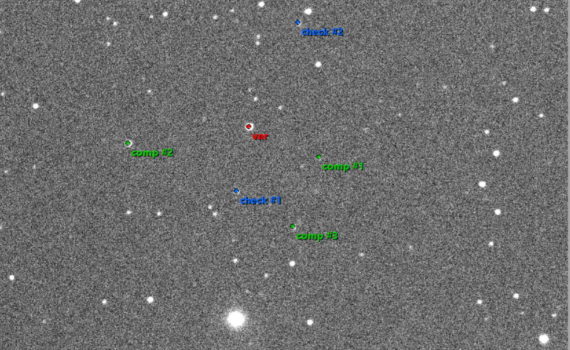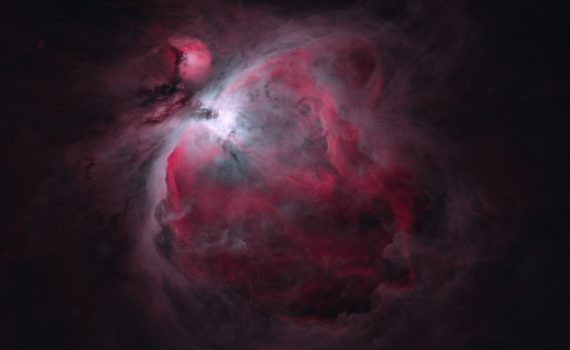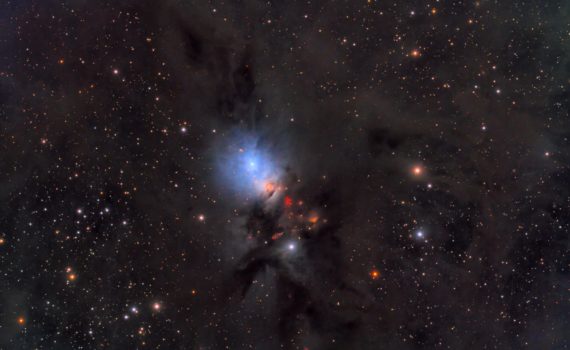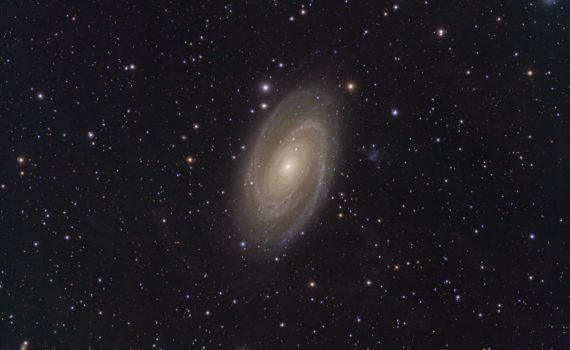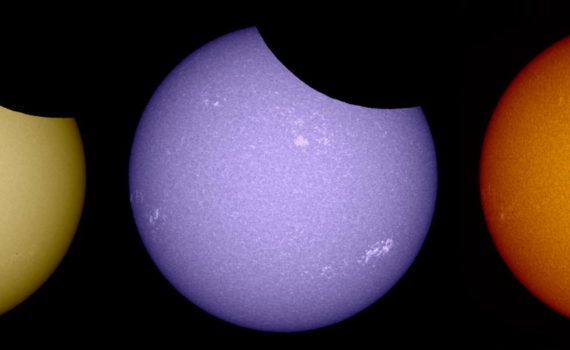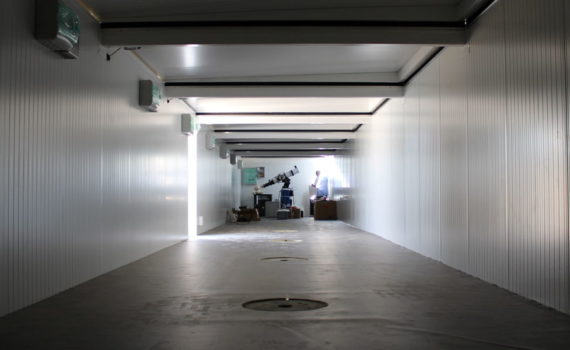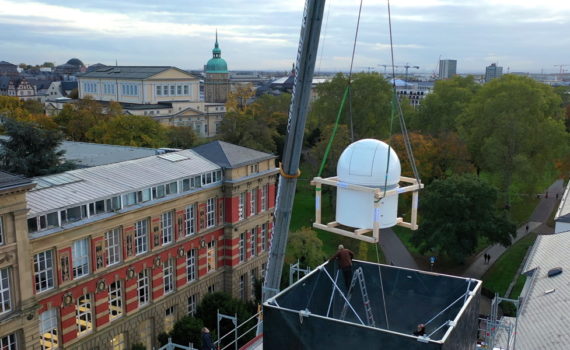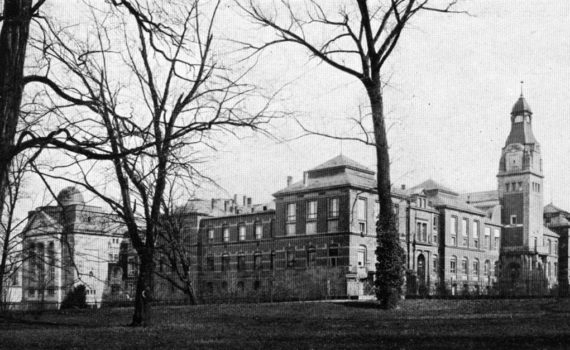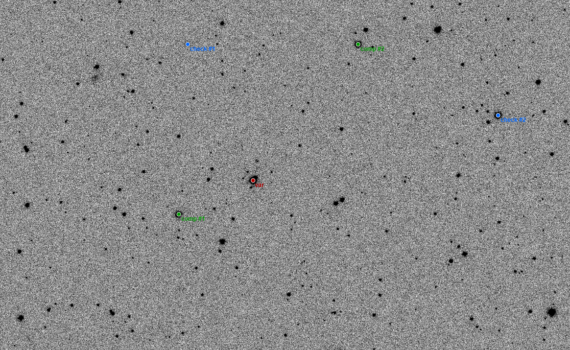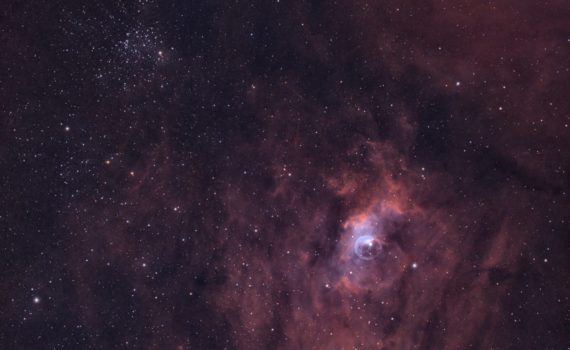The instruments at the TURM and TURMX Observatory are regularly used by students as part of the advanced lab course in physics (Fortgeschrittenenpraktikum Physik). During the summer semester, we offer a lab activity on the physics of the solar atmosphere using the solar telescopes on Uhrturm at the heart of […]
Robert Roth
Julian Schulze & Aleksandar Vučković In the context of the physics lab course ”Photometry in Astrophysics”, we studied the variable star BN Tri, a part of the constallation Triangalum located in the northern sky. A variable star is a star whose brightness changes over time, in contrast with the usual […]
Thierry Kaldenbach & Carl Georg Boos Thanks to the Fortgeschrittenen Praktikum we were able to oberserve variable stars through a night. The chosen star NP-Lyn is located in the Lynx constellation. The observation was done the night of the 20th January, 2020. Due to many clouds the telescope shut down […]
One of the absolute highlights of the winter season, the Great Orion Nebula, M42, located in the constellation Orion. You can see it by naked eye in sword of Orion from a reasonably dark location. Because of its brightness and size, it is a very popular target for entry-level astrophotography. […]
This is NGC1333, a blue reflection nebula surrounded by a dramatic scenery of dark and dusty nebulosity and colorful stars. The red specks of light below the main reflection nebula are Herbig-Haro objects that are produced when jets of gas ejected from newly formed stars hits the surrounding gas and dust […]
Bode’s Galaxy, also known as Messier 81, is a grand design spiral galaxy ind the constellation Ursa Major. It was discover in 1774 by Johann Elert Bode, who also determined the orbit of the planet Uranus and actually proposed the name. The galaxy is about half the size of the […]
The instrumentation at the TURM Observatory is optimized for the observation of the sun, i.e., the apparent surface of the sun – the photosphere – and the atmospheric layers above – the chromosphere. In contrast to many faint and fuzzy night-time objects, the sun offers a huge intensity across the […]
The instruments at the TURM and TURMX Observatory are regularly used by students as part of the advanced lab course in physics (Fortgeschrittenenpraktikum Physik). At the TURMX Observatory we offer a lab activity on photometry and its applications in astrophysics. The focus is on time-resolved differential photometry using modern imaging […]
We have installed the TURMX setup in August 2019, right after the construction of the new observatory module “Apollo VII” at E-EyE was completed. As shown in the image above, we were the first team to move into the new module. The team at E-EyE had done a great job […]
The TURMX Observatory at the E-EyE Astronomical Complex near Fregenal de la Sierra in the Extremadura region in Spain ist fully remote operated. Although the are E-EyE technicians on site, in case of technical problems, the goal is to run the setup over an extended period of time without touching […]
The dome on top of the Uhrturm houses a versatile setup with several telescopes riding on the same mount, an 10micron GM 2000 HPSII equatorial mount. This mount accurately compensates the earth rotation with high accuracy and allows us to point the specific objects in the sky with high precision. […]
The design, construction, and installation of the TURM Observatory on top of the historic Uhrturm was an exciting adventure in itself. Because of the limited space on the platform on top of the Uhrturm we went for the smallest possible dome, a fully automated ScopeDome 2m model. The dome was […]
The historic photograph above shows the view from the Herrengarten towards the buildings of the physics and electrical engineering as well as chemistry institutes of the Technische Hochschule (TH) Darmstadt. The main part of this complex was completed in 1896 based on the design of architect Erwin Marx. The complex […]
Lisa Wagner & Cedric Wenz Photometry in astrophysics is a means to evaluating the brightness of an astronomical object, which is measured in the historical unit magnitude. Since it is much easier to measure a differential rather than an absolute brightness, the observed object is often compared to stars that […]
The Bubble Nebula, NGC7635, part of a larger HII could, Sh2-162, in the constellation Cassiopeia with the open cluster M52 in its neighbourhood (top left corner of the image). The “bubble” is produced by the stellar winds from a massive young and hot star, SAO20575, in its center. The bubble […]

